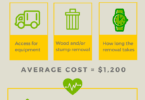There are many advantages to starting your own compost and because of that many people have started to wonder how they could possibly start their own compost and make it work for them. The term compost simply refers to the breaking down of organic materials into soil. A compost heap has the potential to make some of the most healthy and nutrient rich soil that can be used for a number of functions. It can be used to start a garden, to replenish dead soil and to repot house plants. Plants love compost soil because technically it is alive and as it continues to break down, it will give plants everything they need to thrive. There is no trick to starting an effective compost heap, but there is some preparation involved. You also should know exactly what types of materials you can compost as well as those materials you should avoid tossing in.
1. Pick a Spot
Go out into your yard and decide where you’d like to build your compost bin. Remember that as summer heats up your compost might become a little smelly at times. It is recommended that you keep it a good distance away from your house and not upwind from any of the windows in your home.
2. Build or Buy a Bin
You can choose to either purchase a compost bin that has already been created or build your own. They are quite simple to build and most of the nice ones consist of only a few materials. If you are building one, start with several different wooden bracings. Then purchase finely wound wire mesh (rabbit fences or other garden fences are great choices). Simply connect and secure the wooden bracings with nails so that you have a shell. After you have finished that, secure the wire mesh to the shell using a staple gun or nails. Your compost bin should not have a bottom.
3. Start Composting
After you have chosen a spot and built your compost bin, it’s time for the fun part. Start adding unused materials to the compost pile to get your compost rolling. Vegetable and fruit scraps, egg shells, paper napkins, freezer vegetables, old flower arrangements, shredded cardboard, lint from your dryer, tea bags and many more. Be creative. You generally don’t want to compost anything that has been cooked or that has preservatives in it. You also don’t want to compost dog droppings or other droppings. You can, however, add horse manure and/or urine to your heap. These are very nutrient rich. However, your heap might start to smell a bit if you add these elements.
4. Churn the Soil
As you are adding materials, make sure to churn the soil using a rake or shovel. This simply means that you should help the soil rotate and use the soil that has already been created to bury new materials so that you can get them composting faster. You should churn the soil at least once every two weeks to wake up the composting process.
5. Use the Compost Soil
The most enjoyable part of having a compost heap is being able to reap the benefits of your labor. At the end of the season, store your soil in open buckets to get them ready for the garden or your house plants the next year. The reason you don’t want to have a top on the container is because the soil is alive and needs oxygen to keep creating those precious nutrients. The soil can be used right away or stored for several months and used when the summer season rolls around again.







